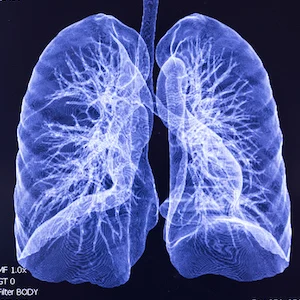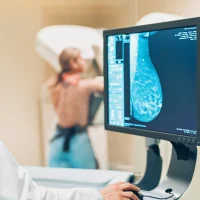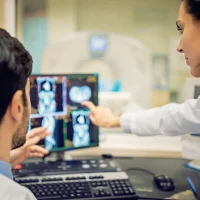New assistive technology developed by University of Waterloo researchers has been shown to be useful in diagnosing collapsed lungs from chest x-rays, with better accuracy than radiologists. The AI-driven system could serve as a “computational second opinion” for clinicians given that evaluation of this condition can at times be difficult.
You might also like: Vape and Lung Injury
The system uses artificial intelligence (AI) software to search a database of more than 550,000 x-rays, including 30,000 cases of collapsed lungs. Using this data, the system is then able to analyse a new patient’s images to determine if the individual has a collapsed lung. The new tool, according to the researchers, helps them to identify 75% of cases of collapsed lungs, or pneumothorax. In contrast, medical specialists diagnose fewer than 50% of cases using only chest x-rays.
“Our results are very exciting,” said Antonio Sze-To, a postdoctoral fellow at Waterloo. “The AI we use works almost like magic – and it will help radiologists save lives.”
Pneumothorax occurs when air gets between the chest wall and the outside of a lung, causing symptoms such as shortness of breath. Timely diagnosis and treatment is important, or else this painful condition could worsen and cause death. Its most severe form can be relatively easy for experienced radiologists to diagnose from x-rays. However, minor cases are extremely challenging to detect, resulting in missed diagnoses that put up to 50% of patients at risk.
“We spend a lot of time, energy and resources needlessly investigating other possible causes of the same symptoms and people suffer in the meantime,” said Hamid Tizhoosh, a professor of systems design engineering and director of the Laboratory for Knowledge Inference in Medical Image Analysis (KIMIA Lab).
With this in mind, Tizhoosh and co-researchers are now collaborating with the University Health Network (UHN), a healthcare and medical research organisation consisting of several Toronto-area hospitals, to increase the accuracy of the technology to over 90%. The AI-focused nonprofit Vector Institute is also involved in this project. It is hoped that the AI diagnostic tool can be integrated into Coral Review, a quality assurance system that allows doctors to provide second opinions by reviewing medical imaging diagnoses made by their peers.
In addition to pneumothorax, Waterloo researchers say they plan to apply the AI system to other conditions that require a chest x-ray, including pneumonia and chronic obstructive pulmonary disease (COPD). They believe this kind of technology, which offers computational second opinions, will help reduce treatment delays that also put patients at risk.
“There is no question systems like this will be in place in hospitals within the next two years,” Tizhoosh noted. “People are pushing for it and the technology is there.”
Source: University of Waterloo
Image credit: iStock
Latest Articles
Imaging, Artificial Intelligence, Radiologists , lung cancers
New assistive technology developed by University of Waterloo researchers has been shown to be useful in diagnosing collapsed lungs from chest x-rays, with...










